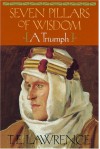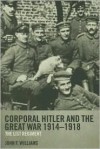Currently reading
SUNNY SKY, DEADLY SKY

"SPITFIRE ACE: My Life as a Battle of Britain Spitfire Pilot" is based on an unfinished memoir the author Gordon Olive was writing about his wartime experiences prior to his death in 1987. (Following Olive's death, his family contacted the editor of this book, Dennis Norton, who had corresponded with Olive the year prior to his death, to complete work on Olive's memoir. Thus, this book is the finished product.)
In reading this book, I felt as if Olive himself were recounting to me the full wealth of his flying experiences. I seemed to hear an unmistakably clear, Australian accent as I went from page to page. After a rigorous, competitive process, Olive won admission to the Royal Australian Air Force (RAAF) in 1936, age 20. He trained for a year, earned his wings, and then he earned a Short Service Commission with the Royal Air Force (RAF) and the opportunity to receive advanced training in Britain. Olive speaks extensively about his time with the prewar RAF during the years 1937 to 1939, which makes for some very fascinating reading. What I found interesting to learn is that Olive, now in the RAF, was disappointed in having been slotted to serve as a fighter pilot. His first choice was bombers because he envisioned later having a career back in Australia as an airline pilot. He felt the experience with multi-engine aircraft would serve him in good stead.
With the outbreak of war, Olive's squadron formed part of Britain's home defense against anticipated Luftwaffe attacks on ports and coastal bases from SE England to the Firth of Forth in Northern Scotland. He flew numerous patrols and engaged in some meteorological flights, as well as some experiments aimed at revising fighter tactics. Of the latter work, he writes that "When the experiments were over [this was in Britain during the Phoney War period of 1939-1940], I wrote a paper on our findings which recommended that we should function in elements of two aeroplanes, not three as was the established practice. The section of three was a legacy of the First World War. I might have saved myself the trouble because nobody took the slightest notice of it."
Then with the coming of the German Blitzkrieg in Western Europe on May 10th, 1940, the subsequent decimation of Britain's Advanced Air Striking Force (AASF) in France, and the eventual retreat of the British Expeditionary Force (BEF) to Dunkirk toward the end of the month, Olive's squadron became engaged in flying missions over the evacuation beaches there, often flying as far as 20 miles inland to ward off any German fighters intent on strafing the soldiers on the beaches.
Olive is a very good writer. He gives the reader a palpable sense of the urgency of the hour following France's capitulation to Germany in June 1940 when Britain stood alone and invasion seemed both certain and imminent. Hardly anything escapes his attention. For instance, on one of the missions he flew to France to view the developing German invasion preparations and proliferation of air bases along the Pas de Calais, he writes that "[i]t was estimated that in addition to the dozen or so French aerodromes within seventy miles of the English coast, the Germans constructed a further thirty or more in June and early July [1940]. With three squadrons operating off each aerodrome, this threatened us with well over a thousand aeroplanes."
Olive's squadron (65 Squadron) would go on to fly combat during the most critical moments of the Battle of Britain from July to late August of 1940 before being belatedly sent up to Scotland to rest and refit. The book is full of Olive's descriptions of the scale of combat he experienced in the skies over SE England and the Channel that will leave any reader grasping for breath. It is that INTENSE! Let me cite the following passage.
"I called Control and was given a course to steer; a minute later and I saw a dot on the horizon. I was flying straight at it and it was not moving. Either it was going the same way as I, or it was coming towards me.
"A few seconds later it was clearly a single-engined fighter - either a Spitfire or a Me 109. Which? It answered the question for me and dozens of tracer streaks flashed towards me. As we did not fire tracer I instantly knew he was not one of ours, but before I could make a move to put my sights on him, he flashed by overhead, tracer still pouring out of his guns. He was travelling at full speed ... running slightly downhill at about 400 mph. My own speed would have been around 350 mph, so our combined closing speed would be about 750 mph or twelve miles a minute. As neither the Spifire nor the Me 109 could be seen five miles distant from head on, this meant that he had come from a position beyond my range of vision to point blank in thirty seconds. He probably opened fire a mile away when he still could not be sure of my identity about five seconds before he passed me. … It was a good lesson on the speed at which things happened – out of sight to point blank in thirty seconds, with five seconds to identify friend or foe, then out of sight again in the same time." (Olive scored 2 victories during that particular mission.)
Olive would return to active service in SE England in October 1940 as a seasoned ace, flying several more combat missions before the squadron was broken up the following spring and he was sent off to help form an RAAF night fighter squadron tasked with the defense of the western approaches to Liverpool, the West Midlands, and Manchester against Luftwaffe night raiders. His subsequent return to the RAAF in Australia and his experiences there also make for very interesting reading.
"SPITFIRE ACE" I would rank as one of the top wartime pilot memoirs I've yet read. Olive not only writes well, but was a skilled artist, too. The book contains several of the illustrations he painted from memory of the various aerial encounters he had during the Battle of Britain. There are also a few photos. This book is a keeper.
 1
1













